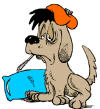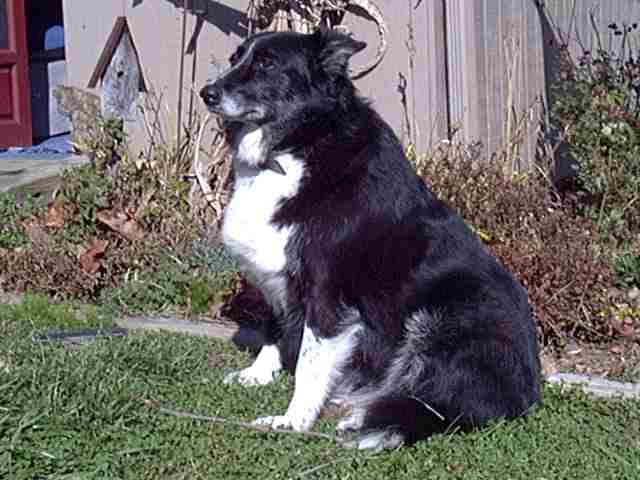Cancer & your Dog and Cat
Why is Cancer killing our Pets?
Courtesy of New Living' Newspaper
VACCINES
Over the past decade or so, many veterinarians have become increasingly
convinced that a number of vaccines are doing more harm than good for our
animal companions.
Some remain necessary, even mandated by law, such as rabies. But not all
the annual boosters that have been traditionally given now appear to be
necessary and they may be leading to several diseases.
Among the conditions associated with vaccines are skin allergies, bladder
infections and cancer.
The U. S. veterinary community is currently reviewing most vaccines
protocols.
When it is time to revaccinate your animal, your veterinarian should consider
the pet's age, his/her lifestyle (indoor or outdoor), his/her general state of
health, the prevalence of the disease in question in the geographic area where
you live, whether your animal is pregnant, whether or not you board her/him
and other factors. Each case is individual and should be considered as such.
One of the more no-holds-barred statements about vaccines is Dr. Richard
Pitcairn's warning: "Giving a vaccine to an animal with cancer is like pouring
gasoline on a fire."
He also advises not vaccinating pets who have breast tumors or any other
growths or tumors. His overall recommendations regarding vaccines are these:
Try to get your veterinarian to give single or simple vaccines rather than
complex vaccines. Young animals can tolerate a reduced vaccination schedule,
but vaccinating is not advised before sixteen weeks of age.
Annual boosters should be avoided even though they have been popular.
Pitcairn goes so far as to say avoid "any further vaccinations after the
initial series as they are not necessary."
He adds that the latest official medical opinion is that annual boosters
are neither required nor effective, although not all veterinarians will agree
with or even know this fact.
THE PET FOOD INDUSTRY
Perhaps the most shocking and informative book about the pet food industry
is Ann Martin's "Food Pet's Die For", published in 1997.
As Dr. Michael W. Fox, vice president of the Human Society of the United
States, says, "Ann Martin is to the pet food industry what Rachel Caron was to
the petrochemical-pesticide industry." Martin spent seven years investigating
the commercial pet food industry and what she uncovered isn't pretty.
There are several reasons you really do not want to feed your dog or cat
commercial foods. Perhaps the most compelling moral reason is that there are
rendered, euthanized pets in much of this food.
To find out more about euthanized pets in foods
Euthanized Pets in Dog and Cat Food
Euthanized Pets
(The above 2 links will open in a new browser window)
These pets have been mixed with other materials, including some condemned
for human consumption: "rotten meat from supermarket shelves, restaurant
grease.. '4-D' (dead, diseased, dying and disabled) animals and roadkill."
The Minister of Agriculture of Quebec told Martin that dead animals are often
cooked with viscera, bones, fat and fur. In both the United States and Quebec,
this rendering of pets is not illegal. Martin points to an article originally
published in the San Francisco Chronicle in which an employee and ex-employee
of a rendering plant admitted that their company rendered approximately
250,000 to 500,000 pounds of animals, scraps and more, including "somewhere
between 10,000 and 30,000 pounds of dogs and cats a day."
That's enough to make most of us sick, isn't it?

Martin, a Canadian writer who lives with several animal companions, went a bit
further in her investigations and discovered that some pets are euthanized
with sodium pentobarbital and then rendered.
This poison does not break down and goes into commercial pet food and feed
for cows, pigs and horses.
Two thirds of the pet food manufactured in the United States contains added
preservatives, according to the Animal Protection Institute.
There are also coloring agents, emulsifiers, lubricants, flavoring agents,
pH control agents, synergists and solvents. "Of the more than 8,600 recognized
food additives today, no toxicity information is available for 46% of them,"
the institute says.

Ethoxyquin
EQ (ethoxyquin) is the most common antioxidant preservative in pet foods.
It has been found in some dogs' livers and tissues months after the animal
stopped ingesting it.
Ethoxyquin is manufactured by Monsanto Chemical, the largest manufacturer
of bioengineered foods. EQ is listed as a hazardous chemical by the
Occupational Safety and Health Administration (OSHA) and is considered a
pesticide by the USDA. It is used in most US dog food, but is banned in
Europe.
The FDA's Center for Veterinary Medicine requested that pet food
manufacturers voluntarily reduce the maximum level for ethoxyquin by half to
75 parts per million.
To find out more about ethoxyquin go here:
Ethoxyquin: the Bad
Boy on the Label
Do you know why Tippy is such a Healthy, Happy
Dog?
Find
out why Here
Your Furry Friend, Tippy

See Also:
Back to General Pet Care Tips